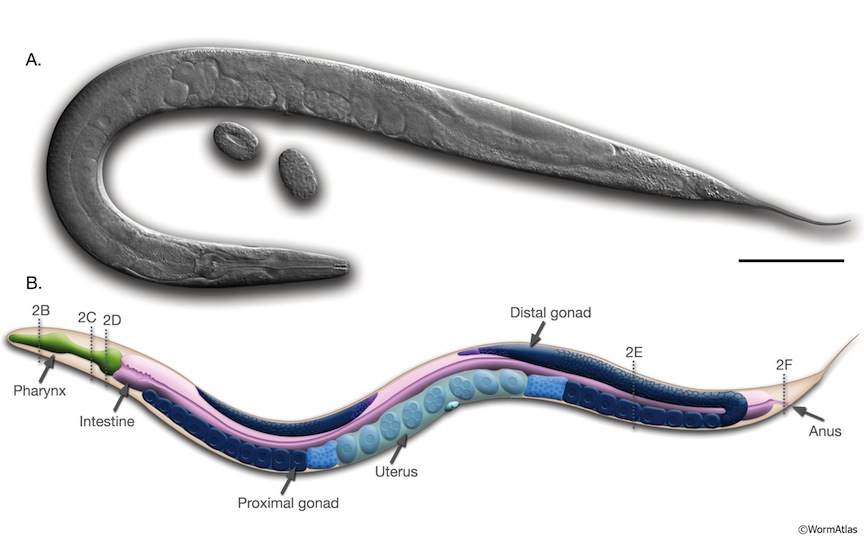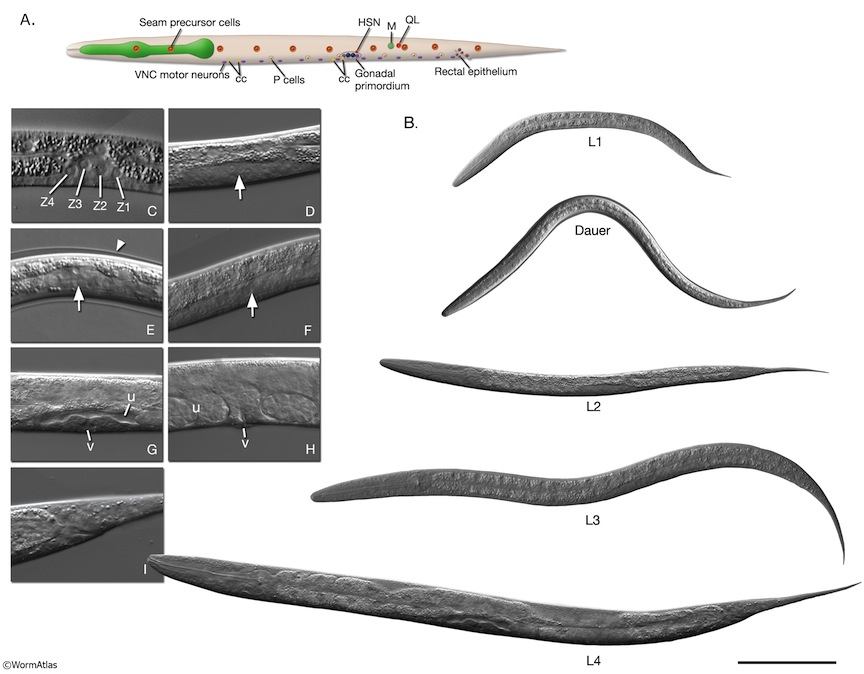Difference between revisions of "Worm numbers"
m (→DNA Numbers) |
m (→DNA Numbers) |
||
| Line 55: | Line 55: | ||
Volume = ~1 nm^3 | Volume = ~1 nm^3 | ||
| + | |||
| + | Therefore: | ||
| + | |||
| + | #bp -> Volume | ||
| + | |||
| + | 1bp -> 1 cubic nanometer | ||
| + | 1kb -> 1000 cubic nanometers = 10^-6 cubic microns | ||
| + | 1Mb -> 10^6 cubic nanometers = 10^-3 cubic microns | ||
| + | 1Gb -> 10^9 cubic nanometers = 1 cubic micron | ||
| + | |||
| + | So, a single haploid genome of ''C. elegans'' (~100Mb) would be approximately 0.1 cubic microns and a diploid genome approximately 0.2 microns. Packed into spheres, these would each be: | ||
| + | |||
| + | Volume of sphere = (4/3)*(pi)*(radius)^3 | ||
| + | |||
| + | Haploid genome radius = ~0.29 microns | ||
| + | Haploid genome diameter = ~0.58 microns | ||
| + | |||
| + | Diploid genome radius = ~0.36 microns | ||
| + | Diploid genome diameter = ~0.72 microns | ||
| + | |||
| + | That is the smallest sphere that the haploid and diploid genomes, respectively, could pack into. | ||
Revision as of 01:13, 11 July 2012
This page is intended to become a collection ground for useful and interesting numbers about C. elegans biology. These numbers include things such as the average volume and mass (calculated estimates) of an adult hermaphrodite, larval stage, or embryo. Some of these numbers are well established facts whereas others are estimations, with a description of the method for calculating or estimating provided.
Worm Volume
Based on these images from Worm Atlas (www.wormatlas.org):
... where the scale bar represents 100 microns, we can roughly deduce the volume of the embryo, each larval stage worm, and the adult hermaphrodite of C. elegans.
Single embryo = ~35 picoliters
Single L1 larva = ~80 picoliters
Single L2 larva = ~135 picoliters
Single L3 larva = ~300 picoliters
Single L4 larva = ~800 picoliters
Single Adult hermaphrodite = ~2.2 nanoliters
Worm Mass
Assuming the worm has a density close to that of water (1 gram per milliliter) these are estimates of mass:
Single Embryo = ~35 nanograms
Single L1 larva = ~80 nanograms
Single L2 larva = ~135 nanograms
Single L3 larva = ~300 nanograms
Single L4 larva = ~800 nanograms
Single Adult hermaphrodite = ~2.2 micrograms
DNA Numbers
Knowing that a single complete turn of DNA is approximately 3.4 nanometers in length (34 Ångstroms), 2 nanometers in width (20 Ångstroms), and is about 10 base pairs (bp)(and therefore 1 base pair is .34 nanometers long (3.4 Ångstroms)), we can deduce the volume of a single base pair of DNA to be roughly 1 cubic nanometer (1 nm^3):
Assuming a base pair is like a short cylinder with volume:
Volume = (pi)*(radius)^2*(height)
Volume = (~3.14)*(~1nm)^2*(~.34nm)
Volume = ~1 nm^3
Therefore:
- bp -> Volume
1bp -> 1 cubic nanometer 1kb -> 1000 cubic nanometers = 10^-6 cubic microns 1Mb -> 10^6 cubic nanometers = 10^-3 cubic microns 1Gb -> 10^9 cubic nanometers = 1 cubic micron
So, a single haploid genome of C. elegans (~100Mb) would be approximately 0.1 cubic microns and a diploid genome approximately 0.2 microns. Packed into spheres, these would each be:
Volume of sphere = (4/3)*(pi)*(radius)^3
Haploid genome radius = ~0.29 microns Haploid genome diameter = ~0.58 microns
Diploid genome radius = ~0.36 microns Diploid genome diameter = ~0.72 microns
That is the smallest sphere that the haploid and diploid genomes, respectively, could pack into.

